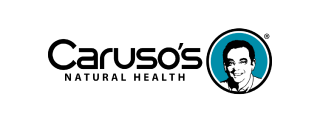
- Health advice
- Mar 14, 2016
Do you blow dry, straighten, colour or style your hair to keep it looking it’s best? You may be creating hair damage.
Ironically, many of the things you do to your hair in the name of beauty could actually be doing it harm – and other lifestyle issues could be damaging it too.
Read on to learn how to keep your hair in optimal condition by guarding against four key types of damage.
Fusion Health, premium quality Australian-made supplements that combine the ancient wisdom of Chinese medicine and the science of modern Western herbalism, including:
1. Mechanical or physical hair damage
The hair is remarkably strong, so we often forget to treat it with gentleness. How often do you wear yours in a tight ponytail or bun, brush it vigorously or yank at it while combing to remove knots? Such actions put pressure and strain on the hair fibres themselves and the follicles that produce them, and may damage the hair’s outer layer, called the cuticle. These issues are exacerbated if they occur on a regular or ongoing basis (for example because you wear your hair in a similar, tight style every day for work) or when the hair is wet and at its most fragile. Instead, keep your hair well trimmed (because more split ends lead to more tangles, which in turn cause more damage when you try to remove them), and use a wide-toothed comb and a gentle touch to remove knots – especially if your hair is wet or damp.2. Chemical hair damage
We’ve all seen people whose hair has been damaged by over-bleaching. You might even have been unlucky enough to experience it yourself, and be all too familiar with the extreme dryness and damage that results. These issues occur because in order to change the colour of your hair, you need to apply chemicals that penetrate deep into the hair strand to the layer called the cortex, which is where the hair pigment is situated. During that process the cuticle (outer layer) can easily be damaged, leading to hair that is brittle, snaps easily and is extremely dry. The application of heat from blow dryers and hair straighteners is another form of chemical damage, and can result in similar issues – especially if accompanied by the use of alcohol-based hairsprays and similar products that further dry out the hair. To avoid these problems, think very carefully about the products you use to colour and style your hair (consider talking to the team at Mr Vitamins about gentle, natural options), always use a low heat setting when blow drying or straightening your hair, and make sure your hair is completely dry before using a straightener or curling iron on it.3. Environmental hair damage
Like your skin and your eyes, your hair is susceptible to UV-damage, and should be protected from over-exposure as much as possible. If you’re in the habit of wearing a hat to protect your face, then you’re already doing the right thing! Strong winds and the dry air of air-conditioned buildings can also wreak havoc on your hair, reducing its moisture levels and making it more prone to dryness and tangling.4. Nutritional hair damage
Unlike the other issues discussed above, nutritional issues that affect the hair occur before your hair is even visible, and instead have an impact on what goes on beneath your scalp. Among others, nutrients required for healthy hair include vitamin C, which is needed for the structure and integrity of the collagen found in and around the hair follicle, vitamin B5, which helps nourish the hair follicles and minerals such as zinc, silica, manganese, iodine and copper, which help keep hair shiny and in good condition.Restoring health to damaged hair
Unfortunately, once your hair is damaged, there’s little you can do to repair it. Often the best solution is to get a decent haircut and wait as patiently as possible for the issues to grow out. However, taking a specially formulated nutritional supplement containing ingredients such as silica, zinc, manganese and vitamins B5 and C may promote healthy hair growth and strength, restore condition to dry, dull and thinning hair, and reduce split ends. The Chinese herb Fallopia (also known as Phytofol® and He Shou Wu) may also be beneficial, and has traditionally been used to support the functioning of the hair follicles, which in turn, promotes the healthy growth and condition of the hair, including strength, volume, colour and shine. It may also aid the management of hair loss issues, including male and female pattern baldness, alopecia and generalised hair loss.Mr Vitamins recommends
Fusion Hair Tonic and Fusion Hair, Skin & Nails. Find out more and shop online below:
- Fusion Hair Tonic: A synergistic blend of Phytofol® and other herbs that promote healthy hair growth and aid the management of hair loss
- Fusion Hair, Skin & Nails: Combines Phytofol® with Silica and other nutrients for healthy hair, skin and nails




















